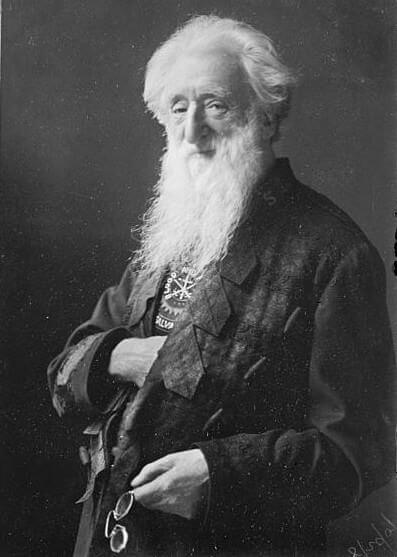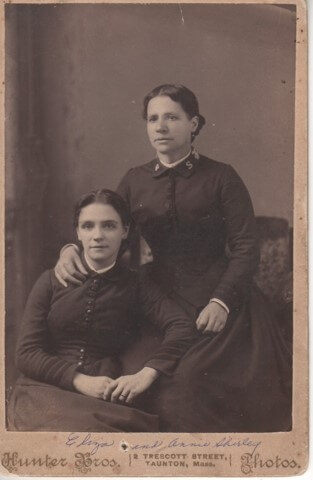The Salvation Army Arrives in Boston
As the Salvation Army stormed into Boston to continue its evangelical and humanitarian mission, it chose a location in the West End for its headquarters in Massachusetts. From this initial foothold in the city, the Salvation Army and its leader Annie Shirley withstood the persecution of established churches and angry mobs, and expanded its operations throughout New England. The organization continues to pursue its mission today as one the country’s largest and most visible charities.
On Sept. 7, 1884, the Salvation Army opened its state headquarters in Boston under Army veteran Captain Annie Shirley at Federhen Hall on North Russell and Cambridge Streets (the site of today’s Charles River Plaza) in the West End. One Boston Globe article stated that on the same day as its opening, a fiery Shirley marched into the paper’s offices to proclaim that the group would “move on Boston at once” and promised “to make a strong campaign” in the city. Her declaration was met with a similar fiery reception from the community. Two days after the group arrived in the city to set up its “corps,” the Boston Globe reported that a huddle of young boys hurled rotten tomatoes and eggs at the Salvation Army’s new meeting hall, and belligerent crowds often filled their initial outdoor meetings.
Such a reception might seem hard to imagine today, considering the Salvation Army’s global reputation as an organization with a mission to help people in need. Their signature red shield and bell-ringing volunteers are staple parts of their brand—especially during the holiday season. While the charity giant’s earliest roots stretch back to the mid-19th century in Great Britain, its subsequent branches in the United States were the starting line for the organization’s attempt to make a worldwide impact. William Booth, known as the father of the Salvation Army, was a Methodist minister who began his work on the streets of London in 1865, eventually giving the organization a military structure and referring to its ministers as “officers.” In 1878, Booth’s Army crossed the Atlantic to bring its mission of “soup, soap, and salvation” to the United States. The first U.S. church, or corps, of The Salvation Army opened its first official United States location in Pennsylvania in 1878. It would take another five years before the Salvation Army would arrive in Massachusetts—starting a corps in Lawrence on Dec. 9, 1883.
It was William Gray, an overseer at a local factory called Pacific Mills, who petitioned for a Salvation Army church in Massachusetts. Having regularly attended Salvation Army events held in New York, Gray recommended to corps leaders that they spread their efforts to the rest of New England. The Army enlisted Amos and Annie Shirley to start the first corps in Lawrence at the Olive Baptist Church, which had previously housed a predominantly Black congregation. The Shirley’s and their daughter Eliza were stalwart cohorts of William Booth and served time under the organization’s banner in England before migrating to the States. Amos eventually earned a captain’s commission with the organization. After opening the corps in Boston, Shirley would lead the openings of eight more locations in the state before moving into Rhode Island, Maine, and New Hampshire.
When the Salvation Army began its expansion into the United States in the late 1800s, its strong evangelical message and tactics were denounced as a threat by established churches and the general public, as seen in the West End. Many did not take to their methods of spreading the gospel, such as using strong military terminology, holding open-air meetings, and organizing street parades where they would sing, bang drums, and play other musical instruments to court the public. For decades, the Salvation Army was ridiculed and persecuted in the United States, but that changed during World War I when Salvationists took to the front lines to assist thousands of soldiers returning home from war. In 1919, the Salvation Army purchased the Hotel Rexford on Bulfinch Place in the West End, where “transients” could rent a room for $0.75 a day, and “permanent rooms” for $3.00 a week. The Salvation Army refurbished the Old Wexford to house approximately 500 soldiers and feed hundreds more.
It is estimated that by 1983, the Army had impacted the lives of more than 700,000 people in Massachusetts. From its start in 1884, with only a few volunteers, the Salvation Army in Massachusetts expanded to today’s 29 corps community centers across the Commonwealth, and smaller service units that allow the group to serve every zip code in the state. Instead of just operating a handful of corps churches, the Salvation Army currently provides direct disaster assistance, comprehensive emergency care, numerous daycare and recreational centers for children, residential drug and alcohol rehabilitation centers, thrift stores and shelters, as well as camps and retreats for adults and children. From its beginnings as an East London Christian mission, the Salvation Army, in conjunction with its evangelical missions, built an international system of philanthropy aimed at relieving poverty and despair.
Article by Yasmeen Freightman, edited by Bob Potenza
Sources: “An Impending Invasion,” The Boston Globe, Sept. 6, 1884; “Boston Besieged: The Salvation Army Fires A Volley,” Boston Daily Globe, Sept. 8, 1884; “Captain Shirley’s Official Report,” Boston Daily Globe, Dec. 27, 1883; “Evangelicals at a Crossroads, Revivalism and Social Reform in Boston, 1860-1910” Benjamin L. Hartley, (University of New Hampshire Press, 2011), pp. 97-107; “Expect to House 500 Men of 26th in Old Hotel Rexford,” Boston Daily Globe, March 31, 1919; “Further Firing,” Boston Daily Globe, Sept. 9, 1884; “History of the Salvation Army,” Salvation Army USA; https://www.bbc.com/news/uk-england-54251256; “Salvation Army Reopens Former Hotel Rexford as the Argonne,” Boston Daily Globe, Nov. 1, 1919; “Salvation Army to Observe 50th Year in New England,” The Boston Globe, Dec. 8, 1933; “Soldiers of Salvation: One hundred years after arriving in Boston, the Salvation Army still relies on everything from bass drums to bubble gum to get its message across,” The Boston Globe, Dec. 9, 1984











